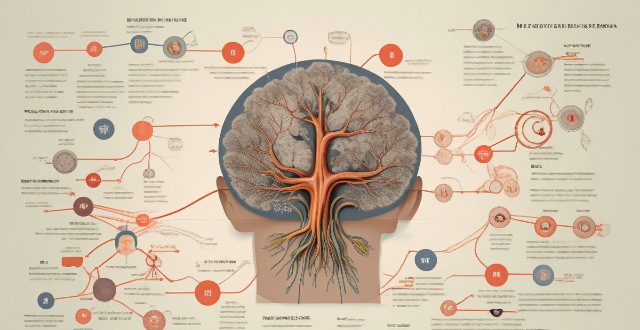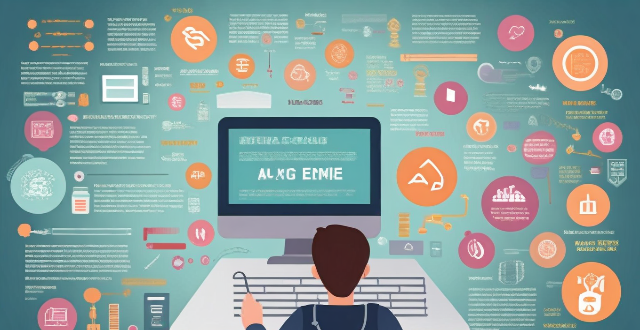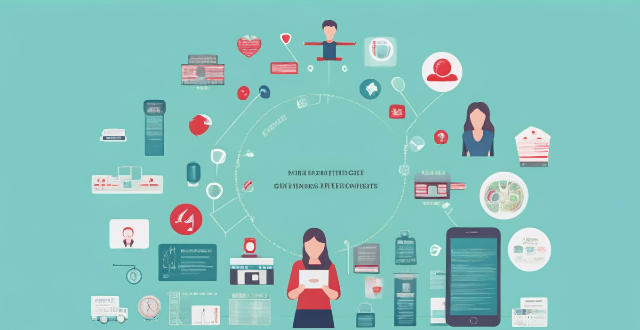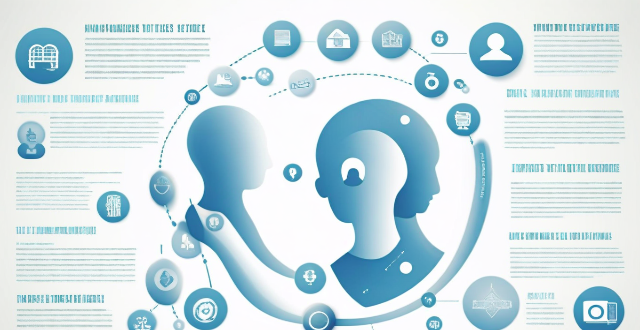Excessive Spent

Is there a correlation between the amount of time spent on sports and the incidence of gaming addiction ?
The text discusses the potential correlation between gaming addiction and excessive time spent on sports, considering displacement theory, common underlying factors, lack of social support, and cultural influences. It highlights the need for further research to understand this relationship better and develop prevention and treatment strategies for both conditions.

Can excessive exercise lead to sleep disorders ?
Overtraining can cause sleep disorders by disrupting normal sleep patterns and causing physical stress and fatigue. Relaxation techniques such as meditation, yoga, or deep breathing exercises can help calm your mind and body before bed. Adjusting your exercise routine and creating a consistent sleep schedule can also improve sleep quality. If you continue to experience sleep disturbances, consult with a healthcare professional for further evaluation and treatment.

How can I distinguish between normal nervousness and excessive test anxiety ?
Normal nervousness is a natural response to stress, while excessive test anxiety can have negative effects on performance and well-being. Signs of excess test anxiety include excessive worry, avoidance behavior, physical symptoms, negative self-talk, and behavioral changes. Seeking help from a trusted source can provide guidance and support to manage anxiety and improve performance.

Can excessive sports participation harm a child's physical development ?
Overtraining in sports can lead to physical injuries, psychological stress, and hindered social interaction in children. It is important to ensure a balanced approach to sports participation, emphasizing rest, proper training techniques, and mental health support.

Can excessive training have negative effects on the immune system ?
Excessive training, or overtraining, can have negative effects on the immune system. Regular exercise enhances immune function by stimulating antibody and white blood cell production, reducing inflammation, and improving circulation. However, excessive training can cause chronic inflammation, oxidative stress, and hormonal imbalances that suppress immune function. Signs of overtraining syndrome include chronic fatigue, mood changes, and increased susceptibility to illness. To prevent overtraining and maintain immune health, individuals should follow a balanced training program, prioritize sleep, eat a nutrient-rich diet, and manage stress levels.

Can regular exercise be an effective way to prevent excessive online gaming ?
Regular exercise can help prevent excessive online gaming by improving mental health, increasing self-control, enhancing social interaction, and improving sleep quality. While it may not completely eliminate gaming behaviors, it serves as a valuable tool in promoting overall well-being and reducing reliance on online gaming as a primary source of entertainment and social interaction.

What are the risks associated with excessive exercise and how can they be managed ?
Overtraining can lead to a range of health problems and injuries such as overuse injuries, cardiovascular problems, immune system suppression, reproductive system issues, and mental health issues. To manage these risks, athletes should prioritize proper rest and recovery, gradually progress their training, maintain good nutrition and hydration, get regular medical check-ups, be aware of their mental health, and listen to their body's signals. By implementing these strategies, athletes can minimize the risks associated with excessive exercise and maintain their physical and mental well-being.

Is there a link between screen time and decreased attention span ?
In the digital age, excessive screen time has been linked to decreased attention span. Studies show that prolonged exposure to screens can lead to reduced ability to focus, shortened attention span, and impaired memory retention. The relationship between screen time and attention span can be understood through mechanisms such as dopamine release, fragmented attention, disrupted sleep patterns, and reduced physical activity. Research findings support these claims, with studies showing that children and college students who spend more time on screens have shorter attention spans and lower academic performance. However, there are ways to mitigate these effects by setting limits on screen time, practicing mindful usage, taking breaks, engaging in physical activity, and prioritizing sleep. By being mindful of our screen habits and taking steps to mitigate their impact, we can maintain healthy attention spans and overall cognitive well-being.

How can women gracefully exit a conversation or event ?
Gracefully exiting a conversation or event is an essential social skill for women to maintain relationships and avoid awkward situations. Here are some tips on how to achieve this: 1. Express gratitude for the time spent together before leaving any conversation or event. 2. If applicable, give a brief reason for leaving early without going into excessive detail. 3. Use body language to signal your intentions by standing up slowly and deliberately, making eye contact, and offering a warm smile. 4. Offer a handshake or hug as a way of saying goodbye if appropriate and depending on the relationship. 5. Follow up afterward with a quick message or note expressing gratitude again to reinforce positive interactions and build stronger relationships over time.

Is social media addiction a real problem, and how can it be addressed ?
Social media addiction is a growing problem with significant impacts on mental health, relationships, and productivity. Recognizing the signs of addiction, such as excessive use or neglecting important activities, is crucial for addressing the issue. The negative effects include mental health issues, relationship problems, and reduced productivity. To combat social media addiction, individuals can set limits on usage, find alternative activities, practice mindfulness, and seek professional help if needed.

In what ways do physical activities promote mental health and deter video game dependency ?
This topic summary delves into the intricate relationship between physical activities, mental health, and video game dependency. It emphasizes the role of physical activities in promoting mental well-being by boosting mood, enhancing cognitive functions, and providing social interaction. Conversely, it highlights how these activities can deter video game dependency by offering alternative forms of entertainment, setting boundaries for gaming time, and fulfilling achievement needs. The text underscores the importance of maintaining a balance between digital leisure and physical activities for overall mental health and well-being.

How does an economic stimulus plan work ?
An economic stimulus plan is a government initiative aimed at boosting the economy during periods of slow growth or recession. It works by increasing government spending, providing tax cuts and rebates, adjusting monetary policy, supporting key sectors, incentivizing investment, aiding consumers directly, changing regulations, expanding international trade, maintaining public services, and monitoring the effectiveness of these measures to ensure they achieve their intended outcomes without causing unintended consequences like excessive debt or price hikes.

How do moisture-wicking fabrics enhance sports clothing ?
Moisture-wicking fabrics significantly enhance sports clothing by improving comfort, performance, and durability. They pull sweat away from the body, reducing stickiness and helping maintain a stable body temperature. These fabrics are lightweight, breathable, and quick-drying, which enhances physical activity. Their resistance to shrinkage and stretching ensures longevity. Moisture-wicking fabrics work through capillary action and efficient evaporation, speeding up the drying process. They are widely used in base layers, athletic wear, and accessories like headbands and socks, providing comfort during extended activities. Overall, these fabrics are crucial for modern sports apparel, offering practical benefits for athletes and fitness enthusiasts.

What are some common mistakes to avoid when making an unboxing video ?
Unboxing videos are a popular way for consumers to get a closer look at products before making a purchase. However, there are some common mistakes that content creators should avoid when making these videos. These include lack of preparation such as not researching the product and inadequate lighting and sound quality. Additionally, focusing too much on packaging and ignoring the unboxing experience can also be detrimental. Neglecting post-production editing can result in inconsistent video quality and ineffective editing techniques. By avoiding these mistakes, content creators can create engaging and informative unboxing videos that resonate with their audience.

What is the significance of server location in optimizing network performance ?
Server location is crucial for optimizing network performance, as it affects latency, network reliability, and data transfer times. By locating servers closer to users, organizations can reduce the distance that data has to travel, resulting in fewer hops and less time spent in transit. This leads to reduced latency, faster load times for websites and applications, and improved video conferencing or gaming experiences. Additionally, having servers located near users can help reduce network congestion and improve overall network reliability. Therefore, organizations should consider server location when designing their networks and choosing hosting providers.

What are the environmental impacts of electric cars ?
Electric cars, also known as EVs (Electric Vehicles), have become increasingly popular in recent years due to their potential to reduce greenhouse gas emissions and improve air quality. However, like any other technology, electric cars also have some environmental impacts that need to be considered. In this article, we will discuss the various environmental impacts of electric cars. One of the most significant environmental benefits of electric cars is their ability to reduce greenhouse gas emissions. Compared to traditional gasoline-powered vehicles, electric cars produce zero tailpipe emissions. This means that they do not release harmful pollutants such as carbon dioxide, nitrogen oxides, and particulate matter into the atmosphere. As a result, electric cars can help reduce air pollution and improve public health. The environmental impact of electric cars also depends on the source of energy used for charging them. If the electricity used to charge an electric car comes from renewable sources such as wind or solar power, then the overall environmental impact is positive. However, if the electricity comes from coal-fired power plants or other non-renewable sources, then the environmental benefits are reduced. It is essential to ensure that the electricity used for charging electric cars comes from clean and sustainable sources. The production of lithium-ion batteries used in electric cars has some environmental impacts. The mining and processing of raw materials required for battery production can lead to water pollution, soil contamination, and habitat destruction. Additionally, the disposal of spent batteries can pose challenges as they contain toxic chemicals that can harm the environment if not disposed of properly. Recycling programs and research into alternative battery technologies can help mitigate these impacts. The manufacturing process of electric cars also has some environmental impacts. The production of electric car components requires energy and resources, which can lead to greenhouse gas emissions and other forms of pollution. However, compared to traditional gasoline-powered vehicles, electric cars generally have a lower environmental impact during the manufacturing process due to their simpler design and fewer moving parts. To fully understand the environmental impacts of electric cars, it is essential to consider their entire lifecycle, including raw material extraction, manufacturing, use, and disposal. A comprehensive lifecycle analysis can help identify areas where improvements can be made to reduce the overall environmental impact of electric cars. This may include using more sustainable materials, improving energy efficiency during manufacturing, and developing better recycling programs for spent batteries. In conclusion, while electric cars offer significant environmental benefits over traditional gasoline-powered vehicles, they also have some environmental impacts that need to be considered. By addressing these issues through sustainable practices and continued research, we can maximize the positive environmental impacts of electric cars and work towards a cleaner, greener future.

How long have Jennifer Lopez and Alex Rodriguez been dating ?
Jennifer Lopez and Alex Rodriguez have been dating for over three years, sharing many special moments together such as celebrating holidays, attending awards shows, going on vacations, and spending quality time with each other's families.

How do scientists predict the impact of regular space travel on the environment ?
Scientists predict the environmental impact of regular space travel by considering various factors such as greenhouse gas emissions, waste generation, and resource consumption. They use computer models, simulations, and experimental data to estimate potential effects on Earth's ecosystems. Greenhouse Gas Emissions: Launching rockets requires a significant amount of fuel, leading to high CO2 emissions. Powering spacecraft and supporting infrastructure also contributes to increased energy consumption and CO2 emissions. Waste Generation: Astronauts generate solid waste during their missions, which needs proper disposal to avoid pollution. Spent rocket stages can cause debris in orbit or harm wildlife if they fall back to Earth uncontrolled. Resource Consumption: Regular space travel requires a substantial amount of resources, including water, food, and materials for building spacecraft and infrastructure. This leads to increased demand and potential stress on freshwater sources, soil degradation, loss of biodiversity, and environmental damage due to material extraction. Mitigating Strategies: To address the environmental concerns associated with regular space travel, scientists propose strategies like developing efficient propulsion systems, using renewable energy sources, implementing waste reduction techniques, and promoting sustainable resource management practices.

What role does location play in selecting the right school ?
The role of location in selecting the right school is crucial as it affects various aspects such as accessibility, safety, community environment, and extracurricular opportunities. Accessibility is a primary consideration, with parents preferring schools that are easily accessible from their homes or workplaces. Safety is another important factor, with families tending to prefer schools located in areas with lower crime rates and good pedestrian safety measures. The community environment surrounding a school can significantly impact the overall experience of students and families, with local amenities and cultural diversity playing a role. Finally, the location of a school can determine the availability and variety of extracurricular activities available to students. By carefully evaluating these factors, families can choose a school that meets their academic needs and provides a supportive and enriching environment for their children's growth and development.

What kind of discounts should I offer during a clearance sale ?
Offering the right discounts during a clearance sale is crucial for attracting customers and clearing out inventory. Here are some strategies to consider: 1. Percentage-Based Discounts: Start with moderate discounts of around 20-30% on selected items and increase gradually as the sale progresses. 2. Buy One, Get One Free (BOGO) Offers: Select slow-moving items or bundle complementary items together. 3. Tiered Discounts: Encourage customers to spend more by offering tiered discounts based on the amount spent or quantity purchased. 4. Time-Limited Deals: Run short-term promotions like flash sales or countdown deals to create a sense of urgency. 5. Membership or Loyalty Discounts: Offer exclusive deals for members of your loyalty program or reward repeat customers with extra savings. 6. Price Threshold Discounts: Apply discounts only when a certain amount is spent or offer a maximum price guarantee. 7. Gift with Purchase (GWP): Reward loyal customers with free gifts or include promotional items with purchases over a certain amount. 8. Clearance Rack or Section: Designate a specific area or rack for clearance items and use prominent signage and labels to highlight the savings. 9. Online-Exclusive Deals: Offer exclusive online deals to encourage online shopping and reduce the burden on physical store inventory. 10. Combination Discounts: Mix and match different types of discounts, such as a percentage-based discount combined with a GWP offer or allow customers to combine multiple discounts for maximum savings. Remember, the goal of a clearance sale is to move inventory while still maintaining profit margins and brand reputation. Be strategic in your discounting approach and communicate clearly with customers about the deals you're offering.

Does exercise increase deep sleep ?
Exercise can increase deep sleep by promoting thermal downregulation and improving sleep efficiency over time. Regular exercise is recommended to enhance sleep quality, but timing is crucial to avoid sleep disruption.

What are some effective time management techniques for busy professionals ?
Effective Time Management Techniques for Busy Professionals: 1. Prioritize Tasks: Identify key goals, rank tasks by urgency and importance, and focus on high-impact tasks. 2. Create a Schedule: Plan your day in advance, block out time for tasks, and stick to the schedule while being flexible. 3. Use Time-Tracking Tools: Monitor your time spent on tasks, analyze your time data, and set time limits using methods like the Pomodoro Technique. 4. Minimize Distractions: Turn off notifications, create a distraction-free environment, and practice mindfulness to stay focused. 5. Delegate Tasks: Identify tasks that can be delegated, assign them to qualified team members, and provide clear instructions and expectations. 6. Take Breaks and Recharge: Schedule regular breaks, engage in relaxing activities, and maintain a healthy work-life balance to avoid burnout.

Can you provide examples of successful female leaders in various industries ?
Sure, here are some examples of successful female leaders in various industries: 1. **Indra Nooyi** - Former CEO of PepsiCo, Indra Nooyi is a renowned business leader known for her strategic thinking and ability to drive growth. Under her leadership, PepsiCo's revenue grew from $35 billion to $63.5 billion. 2. **Arianna Huffington** - Founder of the Huffington Post and Thrive Global, Arianna Huffington is a media mogul who has redefined the way we consume news and wellness content. She has also been a vocal advocate for sleep and mental health. 3. **Oprah Winfrey** - Media executive, talk show host, actress, and philanthropist Oprah Winfrey is one of the most influential women in the world. She built a media empire that includes OWN (the Oprah Winfrey Network) and O Magazine. She is also known for her charitable work, including founding the Oprah Winfrey Leadership Academy for Girls in South Africa. 4. **Sheryl Sandberg** - COO of Facebook, Sheryl Sandberg is a prominent figure in the tech industry. She is also the author of the best-selling book "Lean In," which encourages women to pursue their careers and break down barriers to success. 5. **Angela Merkel** - Chancellor of Germany, Angela Merkel is one of the most powerful women in politics. She has been a driving force behind Europe's response to the refugee crisis and climate change. 6. **Jane Goodall** - Primatologist and conservationist Jane Goodall is a pioneering figure in animal behavior research. She has spent decades studying chimpanzees in Tanzania and advocating for their protection. 7. **Malala Yousafzai** - Activist Malala Yousafzai became a global icon after surviving an assassination attempt by the Taliban for advocating girls' education in Pakistan. She went on to become the youngest Nobel Peace Prize laureate and continue her fight for education rights around the world.

How does an active lifestyle affect sleep quality ?
The text discusses how an active lifestyle can positively affect sleep quality. It outlines the benefits of physical activity for sleep, such as improved sleep onset, increased deep sleep, reduced sleep disturbances, enhanced REM sleep, and better sleep efficiency. The mechanisms underlying this relationship are also explored, including thermoregulation, stress reduction, neurotransmitter regulation, circadian rhythm alignment, and muscle relaxation. Practical tips for incorporating physical activity into one's routine are provided, such as choosing appropriate activities, establishing a routine, avoiding late-night workouts, being mindful of intensity, and incorporating relaxation techniques. Overall, the text emphasizes the importance of regular exercise for improving sleep quality and suggests ways to optimize its benefits.

Can I combine credit card rewards from multiple cards ?
The article discusses the possibility of combining credit card rewards from multiple cards and provides tips on how to do so effectively. It explains the different types of reward programs, such as cash back, points, and miles, and suggests checking issuer policies to see if combining rewards is allowed. The article also mentions third-party services that allow combining rewards but advises being aware of fees or limitations. To maximize benefits, it recommends choosing the right cards, tracking rewards, redeeming wisely, and taking advantage of bonus offers.

What are the benefits of interval training for runners ?
Interval training is a method of exercise that involves alternating periods of high-intensity activity with periods of low-intensity activity or rest. For runners, this means alternating between running at a fast pace and jogging or walking. Here are some benefits of interval training for runners: 1. Improved Cardiovascular Fitness: Interval training can help improve cardiovascular fitness by increasing the heart rate and breathing rate during the high-intensity intervals. This can lead to improved endurance and stamina, allowing runners to run longer distances without getting tired as quickly. 2. Fat Loss: Interval training is an effective way to burn fat and lose weight. The high-intensity intervals cause the body to burn more calories than steady-state cardio exercises like jogging or running at a consistent pace. This can lead to faster weight loss and a leaner physique. 3. Increased Speed and Power: Interval training can also help increase speed and power in runners. By pushing the body to its limits during the high-intensity intervals, runners can improve their muscle strength and power, which can lead to faster running times and better performance in races. 4. Time Efficiency: Interval training is a time-efficient way to train for runners. Because it involves short bursts of high-intensity activity, it can be done in less time than traditional steady-state cardio exercises like jogging or running at a consistent pace. This makes it an ideal workout for busy athletes who want to maximize their time spent exercising. 5. Reduced Risk of Injury: By incorporating periods of low-intensity activity or rest into their workout routine, runners can reduce their risk of injury from overuse or repetitive strain injuries. This is because interval training allows the body to recover between high-intensity intervals, reducing the stress on joints and muscles.

How can I measure the ROI of my social media marketing efforts ?
Measuring the return on investment (ROI) of your social media marketing efforts is crucial for understanding the effectiveness of your campaigns and making data-driven decisions. Here's a step-by-step guide to help you measure the ROI of your social media marketing efforts: 1. Set clear goals for your social media marketing campaigns. These goals should be specific, measurable, achievable, relevant, and time-bound (SMART). Some common goals include increasing brand awareness, generating leads, driving website traffic, and boosting sales. 2. Identify the key performance indicators (KPIs) that will help you measure your progress towards achieving those goals. Some common KPIs for social media marketing include engagement rate, reach, click-through rate, and conversion rate. 3. Use analytics tools to track your KPIs and monitor your campaign's performance. Most social media platforms offer built-in analytics tools, and there are also third-party tools like Google Analytics, Hootsuite, and Sprout Social that provide more detailed insights into your social media marketing efforts. 4. Calculate your ROI by comparing the revenue generated by your social media marketing campaigns to the costs associated with those campaigns. Use the formula: ROI = (Revenue - Cost) / Cost x 100%. For example, if your social media marketing campaign generates $5000 in revenue and costs $2000 to run, your ROI would be 150%. This means that for every dollar spent on your social media marketing campaign, you earned $1.50 in return. 5. Analyze and optimize your results to identify areas for improvement and optimize your future campaigns accordingly. If your ROI is lower than expected, consider adjusting your targeting, messaging, or ad spend to improve your results. Remember that measuring the ROI of your social media marketing efforts is an ongoing process. Continuously track your KPIs, analyze your results, and make data-driven decisions to maximize the effectiveness of your campaigns.